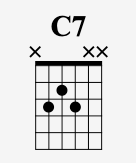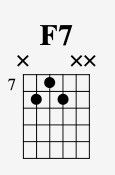Little Wing Guitar Lesson (Jimi Hendrix)
After learning thousands of songs. I’ve seen first-hand the influence of Jimi Hendrix’s guitar style on the history of music. And to be frank, it’s REMARKABLE.
Now to be fair. Hendrix wasn’t the first. In fact, his style was heavily influenced by a few key players that came before him. But he did take it to another level.
Today I want to share with you an iconic song of his. A fantastic song that proves the many intricacies of not only his LEAD playing but also his RHYTHM.
So make sure you’re tuned up and let’s dive into this “Little Wing” guitar lesson.
Who first wrote Little Wing?
"Little Wing" was written by legendary musician Jimi Hendrix. It was first recorded by the Jimi Hendrix Experience and was released on their 1967 album Axis: Bold as Love. The song is known for its beautiful and atmospheric guitar work, and it has become one of Hendrix's most celebrated and memorable compositions. "Little Wing" showcases Hendrix's innovative guitar playing and his ability to create...
When My Train Pulls In Guitar Lesson (Gary Clark Jr)
Gary Clark Jr. is widely regarded as one of the most prominent contemporary blues artists. He is playing a vital role in continuing the blues lineage into the modern era. So today I want to share with you a guitar lesson on his hit song “When My Train Pulls In”.
This epic jam is a 12-bar blues in the key of Em. In this post, we’ll cover the chords, riffs, and rhythms you need to know to get playing in this blues guitar style today.
So make sure you’re in tune and let’s dive into this “When My Train Pulls In” guitar lesson.
Who wrote "When My Train Pulls In"
The song "When My Train Pulls In" was written by American musician Gary Clark Jr. It is one of his original compositions and showcases his exceptional talent as a singer, songwriter, and guitarist. The song was featured on his major-label debut album Blak and Blu, released in 2012. "When My Train Pulls In" has become one of Gary Clark Jr.'s most popular and critically acclaimed songs, praised for its soulful bluesy sound and...
Bad Moon Rising Guitar Lesson (CCR)
Few songwriters have been able to write as many extremely catchy riffs and melodies with very simple ideas as John Fogerty.
You see, so many of the classic CCR tunes are all based around just a few chords and very basic musical concepts. Yet at the same time are so incredibly SATISFYING to play for any level of guitar player.
Look, I’ve studied my share of fancy and complex music. But there’s just something about playing these iconic CCR songs and chord progressions that is just so fun!
And when it comes to timeless anthems, few can match the energetic vibe of "Bad Moon Rising".
So in this guitar lesson, I’m going to break down its catchy rhythm and groove so you can get playing it today.
PLUS this song is actually rooted in the blues. You will see the influence and I will point it out in the guitar part I explain.
The chord progression also uses only the I, IV, and V. Just like what we see in countless blues songs.
So grab your six-string and let's dive in!
Who wrote B...
Blue Sky Guitar Lesson (Allman Brother Band)
I’ve never heard any two guitarists play together in a Southern rock style as well as Duane Allman and Dickey Betts.
Whether it was their harmonized lead guitar lines…Or one holding down some rhythm for the other, the interplay between these two with the Allman Brothers Band was always magical…
So today I’m going to break down both their rhythm and lead guitar approaches in this “Blue Sky” guitar lesson.
So tune up, and let’s get started!
Who Wrote Blues Sky?
"Blue Sky" was written by guitarist Dickey Betts and was featured on their 1972 album titled Eat a Peach. Betts was known for his contributions as a songwriter and lead guitarist in The Allman Brothers Band, and "Blue Sky" is one of his most celebrated songs.
"Blue Sky" was recorded at Capricorn Sound Studios in Macon, Georgia, USA. Capricorn Sound Studios was a significant recording facility for The Allman Brothers Band and other Southern rock artists of the era.
While the song didn’t achieve chart-topping success as ...
Eagles SECRET Guitar Tuning Revealed (Best Of My Love Guitar Lesson)
I’m a guitar nerd. I’ve been obsessed with playing and studying this wonderful instrument for over 25 years.
And the story I’m about to tell you is the absolute truth, as incredible as it may seem.
It all started one day sitting down in my studio creating a new song lesson for you...
After countless hours of listening...
I'd figured out the basic chords to this iconic song but something still wasn't right...
Suddenly I had this unusual thought to try changing the tuning...
What happened next was I stumbled upon a magical SECRET...
A SECRET that has not been uncovered for the past 50 years...
Instantly the chords that came from my guitar sounded GLORIOUS...they were lush...like none I've ever played...
What I am about to share with you is incredibly RARE...
In fact, you won't find this ANYWHERE on the internet…
There is not one single video online that reveals what you are about to see…
But because you are here with me…
I’m going to let you in on this brain-dead simp...
Beast of Burden Guitar Lesson (Rolling Stones)
Keith Richards said, "Music is a great healer, a great diffuser of things. It's a great way to express yourself."
I couldn’t agree more. And that’s why today I wanted to share with you a classic Rolling Stones tune that hits on all 3 of these points.
The groove and vibe will give you a healing feeling.
The lyrics are about diffusing any problems and tensions within a relationship.
And finally, the chords and solo sections are a great way to express yourself on the guitar.
So tune up, and get ready, as we dive into this “Beast of Burden” guitar lesson.
Who wrote Beast of Burden?
"Beast of Burden" was written by Mick Jagger, Keith Richards, and Ronnie Wood. The song was recorded for their 1978 album titled Some Girls, which is considered one of the band's most successful and iconic albums.
The recording of "Beast of Burden" took place at the Pathé Marconi Studios in Paris, France, and overdubbed at Cherokee Studios in Los Angeles, California. The song features Mick Jagger o...
Satisfaction Guitar Lesson (Rolling Stones)
There’s something that I noticed about some of the BIGGEST guitar riffs of all time. I am talking about the fist-pumping anthems you hear played at sports events and ones that seem to hit home with virtually everyone. In fact, when you think about it, it’s kind of a crazy idea.
What am I talking about?
I am talking about a one-string riff. And despite its simplicity, a well-crafted one-string riff can create a catchy and memorable song.
Today I want to explore this idea with you in this “Satisfaction” guitar lesson.
So make sure you’re tuned up and let’s get started!
Who wrote Satisfaction
The song "Satisfaction" was primarily written by Mick Jagger and Keith Richards of The Rolling Stones. Mick Jagger, the band's lead vocalist, contributed the lyrics, and Keith Richards, the guitarist, came up with the iconic one-string guitar riff that defines the song.
The songwriting credit officially goes to "Jagger/Richards," which was the standard way the duo's collaborative efforts...
Play Like Chuck Berry - Chuck Berry Rhythm Guitar Lesson
Today I want to share with you insights into Chuck Berry’s signature guitar style. In this guitar lesson, we’ll dive into Berry’s rhythm and lead styles, and I’ll show you how to understand the concepts behind what he was doing so you can use this in your own music.
Berry is widely regarded as one of the pioneers of rock and roll music. By studying his guitar style, you can gain a deeper understanding of the genre's roots and its evolution straight out of the blues. Berry's innovative guitar techniques laid the foundation for countless rock and roll artists who followed him.
So make sure you’re tuned up and let’s get started!
Chuck Berry Rhythms
One of the first things that you’ll notice about Berry’s rhythms is that he often departed from the typical bar chord shapes and instead relied heavily upon blues rhythm patterns.
For example, if a song was in the key of A, instead of playing an open position A chord and strumming it like this in a song:

Berry would take just two st...
Something Guitar Lesson (Beatles)
Today I want to share with you a song that Frank Sinatra had very high praise for.
In fact, he often referred to it as “the greatest love song ever written" when he introduced it at his live concerts.
And I would definitely agree with Sinatra…
I think it’s one of the best ones I have ever heard too…
The guitar solo in it is incredible as well.
It’s a perfect example of taste and melodic lead playing. (It also uses the CAGED system, and is perfect for players who are studying CAGED)
So if you’d like to play it, then you are in luck because I’m going to break down all the chords, rhythms, key changes, and even the solo for you today in this “Something” guitar lesson.
So tune up and let’s begin!
Who wrote Something?
"Something" is a classic song by The Beatles, written by George Harrison. It was released on their 1969 album Abbey Road. The song was primarily composed by George Harrison, making it one of his most significant contributions to the Beatles' catalog. George Harri...
Messin' With The Kid Guitar Lesson (Buddy Guy & Junior Wells)
"Messin' with the Kid" is a blues song originally recorded by Junior Wells in 1960. It is an up-tempo twelve-bar blues that alternates between Afro-Cuban- and Little Richard-style rhythmic accompaniment. The song is considered a blues standard and has been recorded by a variety of artists, including The Blues Brothers.
In this blog post, we will take a closer look at how to play "Messin' with the Kid" on guitar. We will learn the basic chords and progression, as well as some of the more advanced techniques licks too.
So grab your guitar and let’s get started!
Messin' with the Kid Chords
The basic chords in "Messin' with the Kid" are C7, F7, and G7.
All three of these chords can use the same chord grip, just shifted around the neck.
Here is how I would play each chord.
For C7 I would play this:

F7 can be played the same way just shifted higher up the neck like this:

And finally, G7 is again the same shape. However this time I shifted the entire chord grip to anoth...
